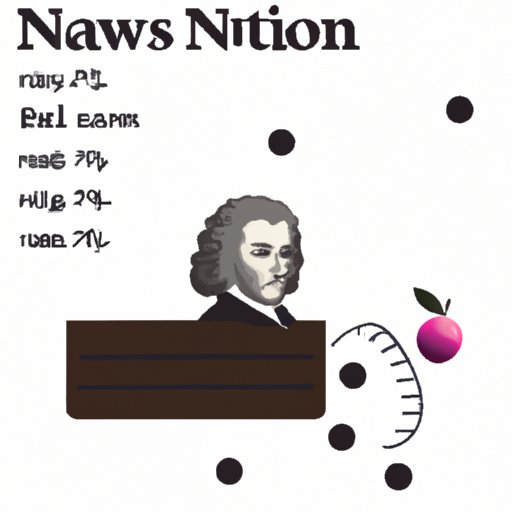Introduction
Isaac Newton is widely regarded as one of the most influential scientists in history. He revolutionized the way we view the world and our place in it, transforming science and mathematics forever. His discoveries have had a lasting impact on many fields, from engineering to astronomy. But what did Isaac Newton invent?
Newton’s work spanned a wide range of topics, from mechanics to optics. He developed the three laws of motion, which form the basis of classical mechanics and are still used today. He also formulated the law of universal gravitation, which explains how objects attract each other in space. And he invented calculus, a mathematical system that has become essential for solving complex problems. These are just some of the inventions credited to Isaac Newton.
Exploring the Impact of Isaac Newton’s Inventions
The impact of Newton’s work cannot be overstated. His discoveries revolutionized science and mathematics, opening the door to new fields of study. As renowned physicist Stephen Hawking noted, “Newton’s work marked the beginning of a revolution in thought. It showed that the universe was governed by rational laws that could be discovered by man.”
At the heart of Newton’s work were mathematics and physics. His laws of motion provided a framework for understanding the behavior of objects in motion, while his law of universal gravitation explained how objects attract each other in space. His invention of calculus made it possible to solve complex problems that would otherwise be impossible to solve.
Examining the Mechanics Behind Isaac Newton’s Inventions
Newton’s laws of motion are among his most famous inventions. The first law states that an object in motion will remain in motion unless acted upon by an external force. The second law states that the acceleration of an object is proportional to the net force acting on it. And the third law states that for every action, there is an equal and opposite reaction.
Newton also formulated the law of universal gravitation, which states that every particle in the universe attracts every other particle with a force that is directly proportional to the product of their masses and inversely proportional to the square of the distance between them. This law explains why objects fall to the ground and why the planets orbit around the sun.
In addition to his laws of motion and universal gravitation, Newton also invented calculus. This mathematical system allows us to solve problems involving rates of change, such as velocity or acceleration. It is used in many fields, from engineering to economics.
Tracing the History of Isaac Newton’s Inventions
To understand how Isaac Newton invented all of these things, it is important to look at his life and education. Newton was born in 1643 in England to a farming family. He received his early education at the local grammar school, where he excelled in mathematics and science.
While at Cambridge University, Newton began to conduct experiments in optics and mathematics. He experimented with prisms to investigate the nature of light and discovered that white light is composed of different colors. He also developed a theory of gravity and began working on calculus.
After leaving Cambridge, Newton continued to work on his theories and inventions. He published his laws of motion and his law of universal gravitation in 1687, and he published his work on calculus in 1704. He also conducted experiments in alchemy and built reflecting telescopes.
Analyzing the Legacy of Isaac Newton’s Contributions to Science
The legacy of Isaac Newton’s inventions is far-reaching. His discoveries laid the foundation for modern physics and mathematics, and they continue to shape our understanding of the world. His laws of motion are still used in engineering and robotics, while his law of universal gravitation is essential for understanding the movement of planets and stars.
Newton’s invention of calculus also had a major impact, making it possible to solve complex problems that would otherwise be impossible. Calculus is used in many fields, from economics to engineering, and it has opened the door to new areas of research.
Finally, Newton’s work inspired other scientists to pursue their own lines of inquiry. His example showed that it was possible to unlock the secrets of the universe through careful observation and experimentation. This led to further advances in science and technology, expanding our knowledge of the natural world.
Conclusion
Isaac Newton is one of the most influential scientists in history. His inventions, from the laws of motion to calculus, revolutionized science and mathematics and opened the door to new areas of research. His discoveries continue to shape our understanding of the world, and his legacy is still felt today.
From mechanics to optics, Isaac Newton’s inventions have had a lasting impact on many fields. His revolutionary discoveries changed the way we view the universe and our place in it, and they continue to inspire future generations of scientists.
(Note: Is this article not meeting your expectations? Do you have knowledge or insights to share? Unlock new opportunities and expand your reach by joining our authors team. Click Registration to join us and share your expertise with our readers.)
